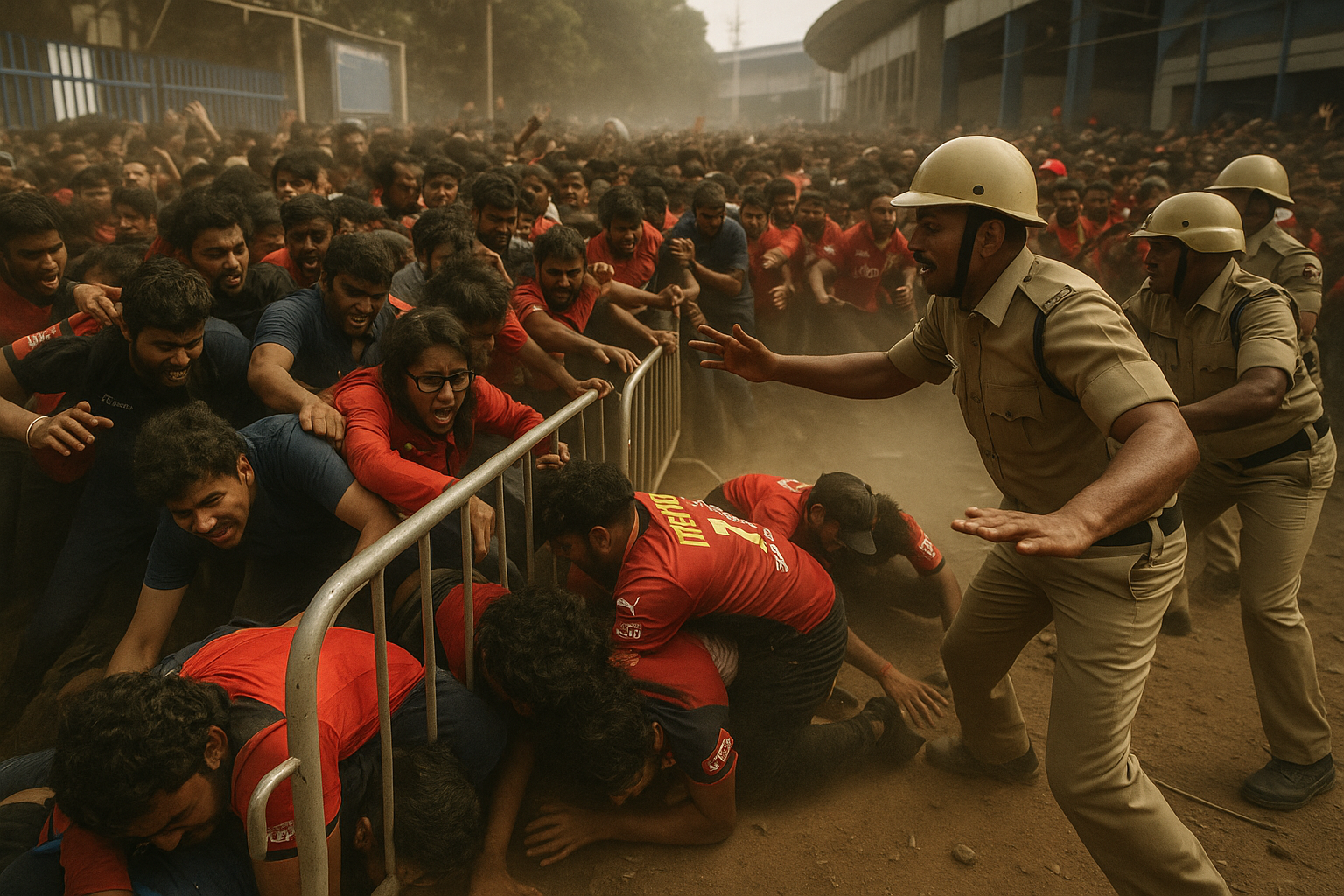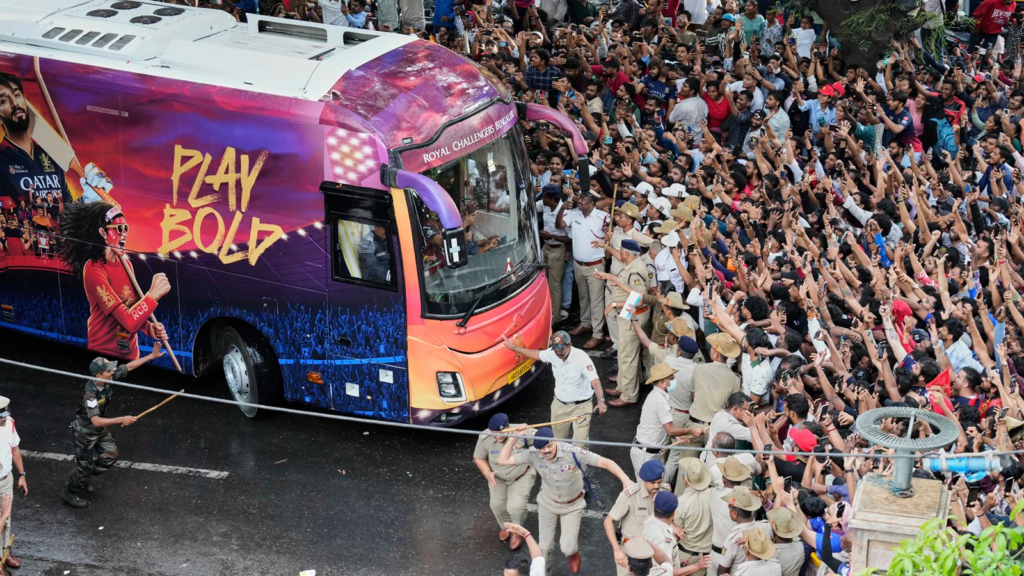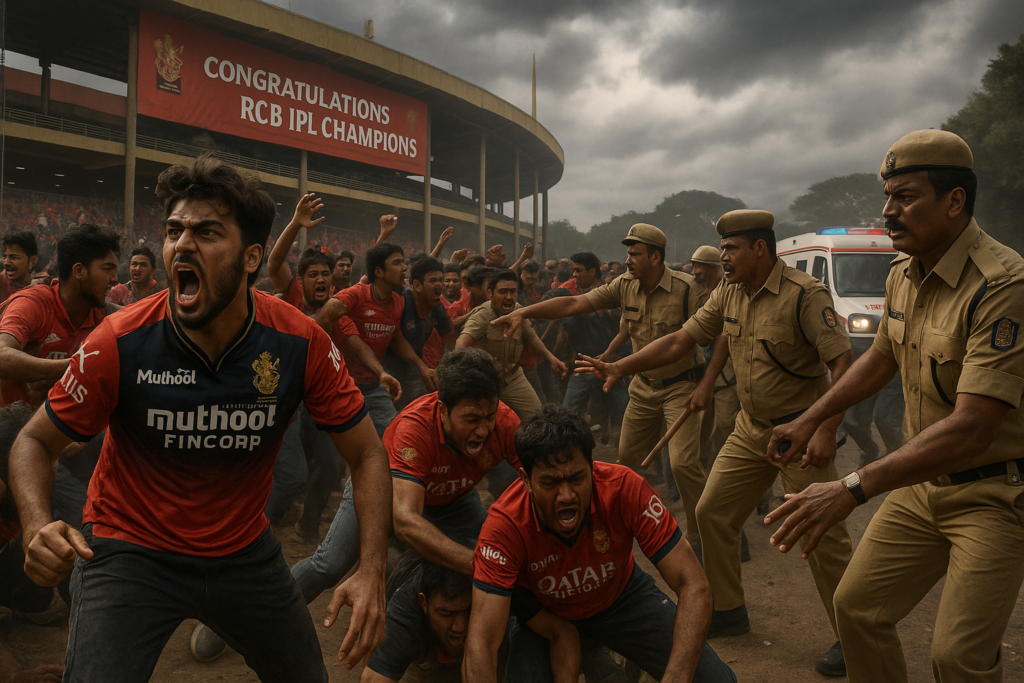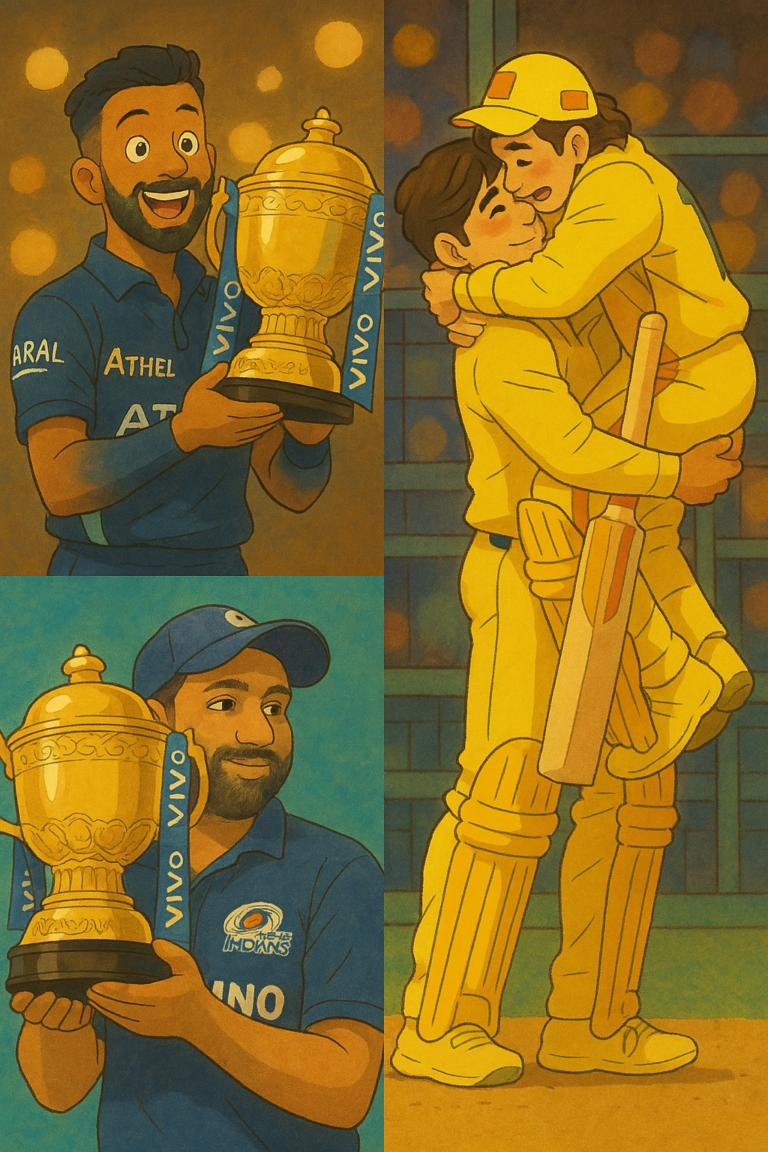
Royal Challengers Bengaluru (RCB) won their first-ever Indian Premier League (IPL) title on Tuesday (June 3), ending an 18-year-long wait by defeating Punjab Kings (PBKS). Riding the wave of celebration, the team announced plans to treat fans in Bengaluru on June 4, promising to “paint the city red.” But by Wednesday, joy turned to tragedy as a stampede claimed the lives of 11 fans who had gathered to celebrate RCB’s historic victory. What happened in Bengaluru? Let’s delve into the details in 10 points:
1. The confusion
RCB legend Virat Kohli, the one-club man, promised after the win that the celebrations in Bengaluru would be unlike anything seen before. An innocent remark that, in hindsight, feels a bit ominous. Soon after, RCB announced that a victory parade would be held from Vidhana Soudha to Chinnaswamy Stadium at 3:30 pm.
But confusion took over. The Bengaluru Traffic Police said no such parade was approved and clarified that the team would instead meet the CM and Deputy CM before heading to Chinnaswamy to greet fans. In yet another twist, RCB later reiterated the parade would, in fact, happen at 5 pm. The police quietly deleted their earlier posts denying the parade.
2. Team arrives in Bengaluru

The RCB team landed in Bengaluru at around 2:12 pm, where Karnataka Deputy Chief Minister D.K. Shivakumar welcomed Virat Kohli and the squad. Shivakumar also handed over RCB and Karnataka flags to Kohli. The team then headed by bus to Vidhana Soudha. Kohli’s wife, actress Anushka Sharma, shared videos showing a massive crowd gathered to welcome the team. The team was later felicitated by Shivakumar and Karnataka Chief Minister Siddaramaiah.
3. Tsunami of red
As the team was being felicitated by political leaders, a tsunami of red was building outside the Chinnaswamy Stadium, where the players were set to arrive next to celebrate with fans. Around 2–3 lakh people had gathered near the venue. Initially, passes were required for entry. However, reports suggest that free entry was later announced, which led to a massive swell in the crowd.
As people tried to force their way inside, barricades toppled and many fell over each other, triggering a stampede.
4. Chaos, celebration and gloom
Even as RCB players were being felicitated at Vidhana Soudha and fans cheered, visuals on social media and TV news channels began showing reports of potential deaths due to the chaos outside Chinnaswamy Stadium. At the same time, several social media handles started urging people not to head toward the stadium, and by around 5 pm, news channels had begun reporting the death toll from the stampede.
Despite these alarming reports, the RCB team arrived at the stadium from Vidhana Soudha with Karnataka Deputy Chief Minister DK Shivakumar to celebrate with the fans. Inside, the atmosphere was electric and the stadium was packed. It felt as though the tragedy unfolding just outside didn’t exist. Virat Kohli and Rajat Patidar addressed the crowd, displayed the trophy, and led a victory parade, likely unaware of the loss of lives occurring just beyond the gates.
5. Victims

A total of 11 RCB fans lost their lives in the stampede. Six of them were males, while five were females.
- Manoj Kumar: He was 18 years old. He was a second-year BBM student at the Presidency College. His father was a pani puri vendor, who wanted his son to study, earn and make their lives easier.
- Shravan: He was a native of Karnataka’s Chintamani. He was aged 20 years old. He was studying dental at the Ambedkar Medical and Dental College.
- Shivalinga: He had just passed his Class 10 board exams and had gone to collect his transfer certificate from school. He took a detour to the stadium in a hope to catch the glimpse of his cricket heroes and celebrate with them. Both his parents were daily wage labourers.
- Prajwal: The 22-year-old had given a job interview and decided to join the celebration. His family had thought that he would return home after the interview.
- Kamatchi Devi: Kamatchi was 29 years old. She was a big Virat Kohli fan. She worked at Amazon in Bengaluru.
- Divyanshi: Divyanshi was just 14 years old. Her mother had told her to bunk school and she took her to the RCB celebrations. Before the chaose unfolded, her mother had told her she might see Virat Kohli at the stadium.
- Sahana: She as 25 years old. She moved to Bengaluru seeking better opportunities and was working with Bosch and was the primary breadwinner of her family. She went to the celebrations with seven of her friends. She was scheduled to get married next year.
- Bhoomik Lakshman: He was 21 years old. He had gone to the stadium with around 10 of his friends. He was separated from his friends during the stampede. It was the last time they saw him.
- 10. 11. Chinmayi Shetty, Akshata Pai, and Poornachandra were among those who tragically died in the stampede at Chinnaswamy Stadium. They had gathered, along with many others, to celebrate Royal Challengers Bengaluru’s historic IPL victory, but the celebration ended in disaster.
6. Aftermath turns chaotic near Chinnaswamy Stadium

In the immediate aftermath of the stampede, scenes of chaos and desperation unfolded. As people were trampled and injured, police and volunteers quickly tried to pull survivors to safety and provide first aid. To control the surging crowd, officers resorted to a mild lathi charge at some gates, trying to disperse the throngs and reach those hurt. Ambulances rushed to the stadium, ferrying the injured to nearby hospitals like Bowring, where doctors worked urgently to treat dozens of victims. Despite their efforts, the crush claimed 11 lives and left more than 50 people injured. Outside the stadium, sirens blared and authorities sealed off the area as evening fell. Shocked onlookers and relatives gathered at hospitals and morgues, anxiously searching for loved ones. The ground near the gates was strewn with shoes, bags and broken barricades – grim reminders of the mayhem. By nightfall, Bengaluru’s celebratory fervor had morphed into heartbreak, as the city grappled with how a day of jubilation turned so suddenly into a nightmare.
7. Families left devastated as joy turns into grief
The families of the deceased were shattered. Outside mortuaries, parents sobbed over the bodies of children who had left just hours earlier to celebrate a cricket win. “He left with a smile, thinking he would see his favourite players,” said a relative of 14-year-old Divyanshi. Manoj Kumar’s father, a pani puri vendor, broke down saying, “I wanted him to study and live a better life. I cannot bear this.” Sahana’s family had been preparing for her wedding next year, now left mourning her in silence. Some families spoke about unanswered calls and frantic hospital visits, hoping their child was only injured. By the time names were confirmed, the grief had turned into frustration and fury. “Who allowed this crowd without proper arrangements?” asked Prajwal’s brother. Across Bengaluru, the mood had turned sombre — flags lowered, celebrations muted. Funerals were held quietly over the next two days, as fans and strangers alike came to pay respects.
8. RCB officials, organisers booked as government cracks down

In the days that followed, the Karnataka government launched a crackdown. Bengaluru Police registered an FIR against the Royal Challengers Bengaluru management, the Karnataka State Cricket Association, and event management firm DNA Entertainment for negligence. On June 6, police arrested four individuals including RCB’s head of marketing Nikhil Sosale and DNA staffers Sunil Mathew, Kiran Kumar, and Sumanth. They were accused of proceeding with a high-risk event without ensuring crowd safety. The CM also suspended five senior police officers including City Commissioner B Dayananda and transferred top intelligence officials. Meanwhile, two senior KSCA officials — secretary M Raghuram and treasurer Vinay Mruthyunjaya — resigned, taking moral responsibility. The Karnataka High Court stepped in, demanding updates and staying arrests of some cricket officials pending review. Authorities promised that accountability would be fixed at every level. A judicial probe led by Justice Michael Cunha was ordered to investigate what went wrong and who gave permissions.
9. Condolences pour in from across cricket and politics
The tragedy evoked strong emotional reactions across the country. Prime Minister Narendra Modi, President Droupadi Murmu, and Karnataka CM Siddaramaiah expressed deep sorrow. Virat Kohli said he was “absolutely gutted” and at a loss for words. Anushka Sharma posted a black screen in mourning. Cricketers like Sachin Tendulkar, Yuvraj Singh, and Anil Kumble called it heartbreaking and offered condolences to the victims’ families. RCB franchise issued a statement announcing ₹10 lakh compensation per victim and support for the injured under an initiative called ‘RCB Cares’. Celebrities, sports stars, and citizens questioned how safety was compromised. “How can you celebrate while people are dying at your gates?” read one viral post. Even fans who were at the stadium described feeling “guilty” cheering as news flashed on their phones. The wave of grief turned into a larger demand for accountability and safer event planning.
10. Legal, political and policy fallout continues
As of June-end 2025, the judicial inquiry is ongoing, but the political fallout has been intense. The opposition BJP accused the Congress government of rushing to hold a public event without basic safety protocols. BJP leaders blamed Deputy CM D.K. Shivakumar for ignoring police warnings and CM Siddaramaiah for failing to ensure coordination. The ruling Congress defended its position, pointing to the event being privately managed. Public interest litigations were filed in court demanding a state-level crowd control policy. The High Court, monitoring the case, has asked for SOPs to be submitted before the next public event. Meanwhile, fans and families continue to demand a permanent memorial for the victims and criminal accountability beyond arrests. Bengaluru’s stampede — the deadliest ever in an Indian sports celebration — has become a defining moment for public safety reform. It is now being cited by city planners as a case study in disaster mismanagement and mass gathering risk.






1 thought on “What happened in Bengaluru? All you need to know about stampede during RCB’s celebrations that killed 11 and the aftermath”